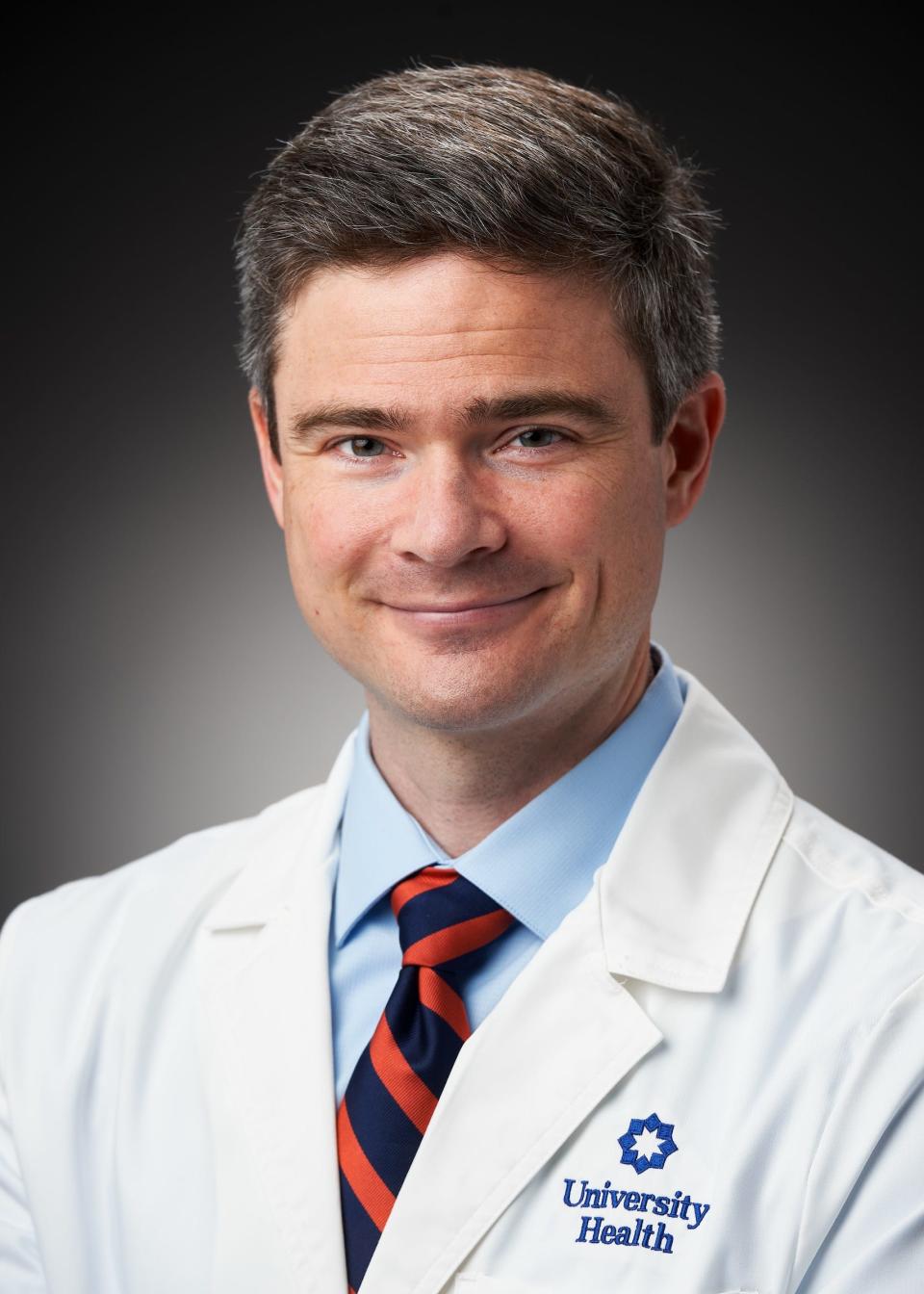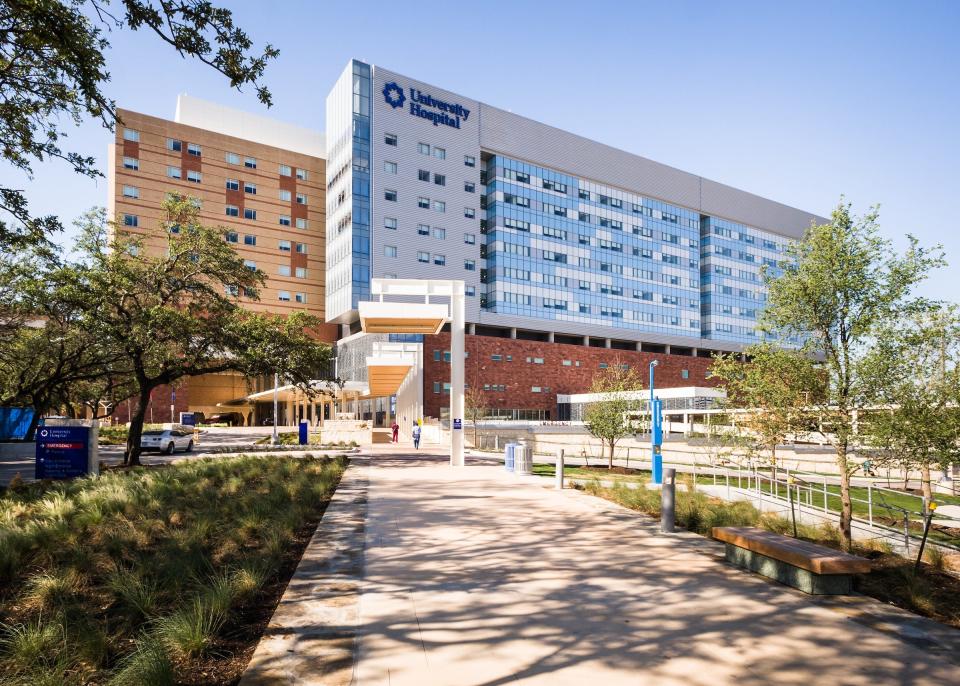11 in Travis County taken to San Antonio hospital to treat carbon monoxide poisoning
As Austin-area residents left without power this week sought alternative ways to keep warm from the freezing temperatures, EMS medics took care of at least 38 of them for carbon monoxide exposure as a result, an Austin-Travis County EMS spokesperson said Friday.
Some people were treated at local hospitals with oxygen. Others needed more serious care.
Dr. Brent Jones, an emergency and hyperbaric medicine at University Health in San Antonio, said his hospital has seen 11 people from Travis County for carbon monoxide treatment. Austin-Travis County EMS helped airlift four of these patients, said Capt. Darren Noak, a spokesperson for Austin-Travis County EMS. Others were taken by ambulance.
Jones couldn't elaborate on patient specifics, but the hospital treats all ages for carbon monoxide poisoning, including children.
'We have let the people down': Austin mayor apologizes for city's response to power outages
Carbon monoxide, or CO, is an odorless, colorless gas produced any time a fossil fuel is burned, and it can cause sudden illness and death, according to the national Centers for Disease Control and Prevention.

The causes of carbon monoxide poisoning for the more than three dozen patients Austin-Travis County EMS treated varied widely, according to Noak. However, the captain said carbon monoxide poisoning from improper use of generators appeared to have increased this year compared with winter storms of the past.
“The use of those generators were not proper, and were not in well-ventilated areas,” Noak said, explaining that several people put generators inside their homes or in their garages.
Jones agreed.
"We see the same pattern with every major winter storm," Jones said. "People lose power, and they start looking for alternative sources for heating."
Often, these cases happen because people ran generators inside their house or inside a garage because they were concerned the generators will be stolen, Jones said. They also occur because of people using cars for heat and not opening up the garage wide enough for air flow. Another problem can be people using gas-powered stoves or ovens as heat sources.
The No. 1 thing people can do to prevent carbon monoxide poisoning is to have a carbon monoxide detector, with working batteries, where they live, Jones said.
How does this compare with 2021?
Austin-Travis County EMS responded to 86 calls about carbon monoxide poisoning from Feb. 14 through Feb. 19 of 2021, the week when the Texas power grid faltered. This week, Austin-Travis County EMS medics responded to 18 calls, for a total of 38 patients, according to Noak.
What are the symptoms of carbon monoxide poisoning?
People can feel nauseated or have a headache. They might feel light-headed or weak.
"They can easily pass it off as 'I'm getting sick with something,'" Jones said.
If it's severe, they will lapse into unconsciousness and could die.
How sick people get depends on the concentration of the gas as well as how long they are exposed to it. It can take only minutes, Jones said, before it becomes severe.
What we know:Austin weather on Friday: Sunshine, thawing temperatures to reach 50
What should you do if you've been exposed?
It's important to get people out of that environment as quickly as possible, Jones said. Go outside, ventilate your home and call 911 if you have symptoms

Why are people being transferred to San Antonio?
University Health is one of only two hospitals in the state that have a hyperbaric chamber to treat emergencies such as severe carbon monoxide poisoning and burns. The other hospital is in Dallas. Other facilities have these chambers, but they are not designated for emergencies.
A hyperbaric chamber is an enclosed space that pushes high levels of oxygen into the air that person is breathing.
In carbon monoxide poisoning, the carbon monoxide binds to the red blood cells much more strongly than oxygen. It takes additional oxygen to clear out the carbon monoxide, usually by breathing it out.
The typical treatment lasts about 2½ hours.
"The majority of patients that I have treated do feel immediately better," Jones said.
Editorial: Austin Energy, Mayor Watson failed communications test

Who needs a hyperbaric chamber?
People with severe carbon monoxide poisoning get treated this way. Those are people who have lost consciousness or had a seizure.
A hyperbaric chamber is also used for people who are more vulnerable to severe effects such as children, people who are pregnant or have carboxyhemoglobin levels (the amount of carbon monoxide in the blood) above 25%.
How quickly do people need to be treated?
Typically, people will be treated with an oxygen mask. If it's severe, Jones wants to treat them in a hyperbaric chamber as quickly as possible, but definitely in the first 24 hours.
Sometimes people will feel fine initially, but they later can have complications two to three months later, such as memory loss or inability to concentrate.
Starting with 2021, compare how the past three winter storms have looked in Austin
Why doesn't Austin have a hyperbaric chamber in its hospitals?
Austin has been behind in covering many medical conditions for decades. As the population has grown, though, and as the University of Texas Dell Medical School has grown, many medical conditions are now treated here that weren't in the past few years.
In cases of severe burns, all patients were being transferred from Central Texas to Brooke Army Medical Center's burn unit until Dell Seton Medical Center started a burn unit five years ago. Now, hardly anyone is transferred there for burn treatments from the Austin area.
Hyperbaric chambers cost between $100,000 and $200,000, and also require doctors trained in their use.
Frozen trees, icy roads, power outage: See the damage across Austin during winter storm
How can you prepare for the next storm?
“Preparation is key,” Noak said. “We’re not typically used to these types of events, but, when they do happen, they’re sometimes pretty severe. Have medications on hand that you might need, have water on hand, have food on hand and have safe alternatives for electric power and know how to utilize them properly.”
As far as the proper use of generators, Noak explained that they should be placed far away from the home and extension cords should be used to run the power inside.
“You may also want to take wind conditions into account,” he continued. “Even if the generator is placed away from the home, if the wind is blowing right into your back patio area there is a possibility those fumes can get in.”
This article originally appeared on Austin American-Statesman: 11 people taken to San Antonio after carbon monoxide poisoning

